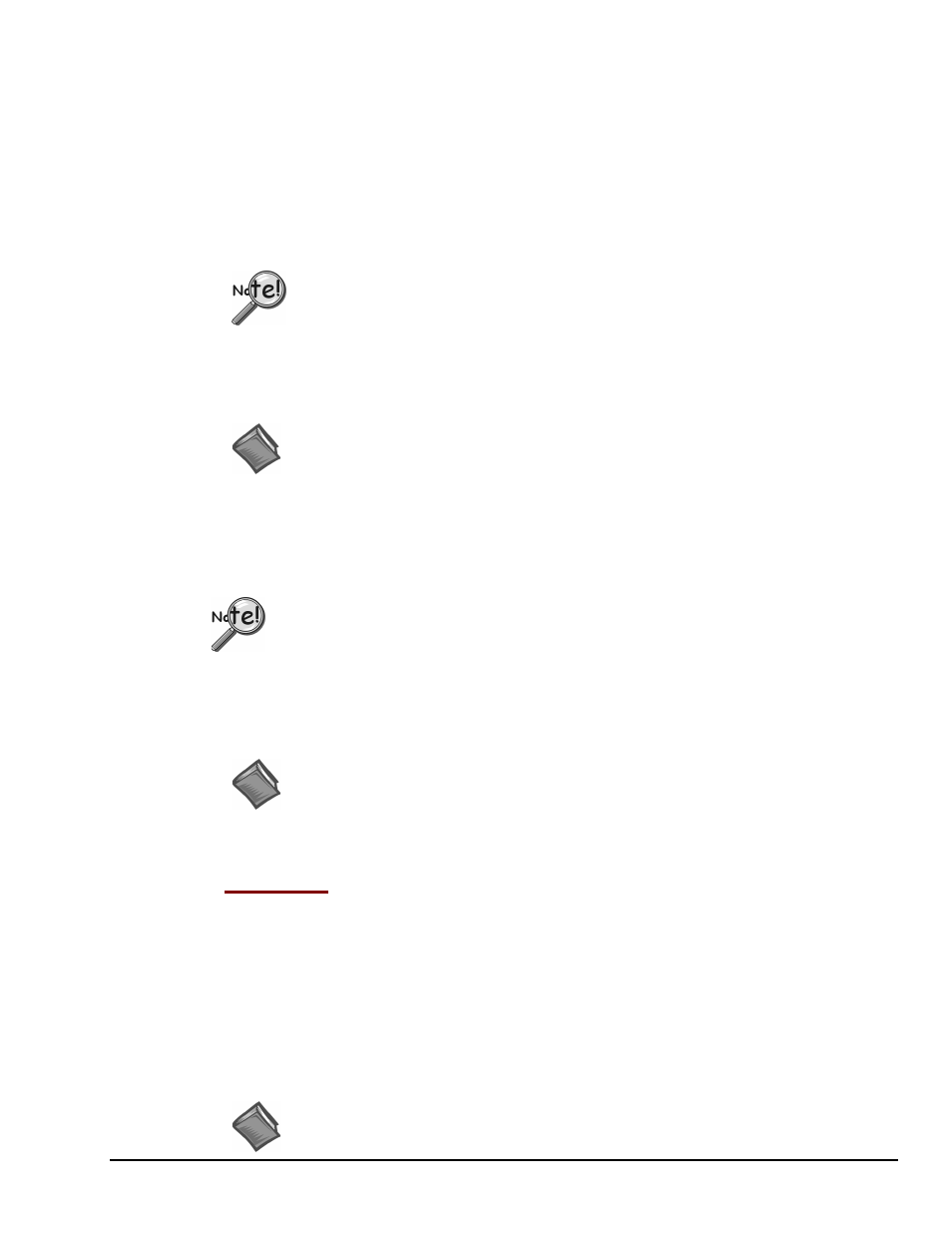Timing mode……19, Encoder……19, Edge level – Measurement Computing WaveView User Manual
Page 21

WaveView
03-05-02
WaveView, pg. 19
•
Timing Mode
This mode provides a means of measuring time between two subsequent events, i.e., the edge of
one channel with respect to the edge of another channel. The edge selection is done in each
channel’s debounce setup. Whenever the time measurement is latched from the counter, the
counter is immediately cleared and enabled for accepting the subsequent time period, which starts
with the next edge on the main channel.
The data returned is interpreted as time measured in ticks. This data represents the number of
ticksize intervals counted during the timing measurement. There are four timebase settings:
20 ns, 200 ns, 2 µs, and 20 µs. These are often referred to as tick-sizes. The WBK17 uses
a 50 MHz, 10 ppm oscillator as a timing source.
If the input signal has a poor slew rate the timing mode will provide variant results,
dependant upon the comparator threshold.
In timing mode, time can be measured with a 16-bit (Counter Low), or a 32-bit (Counter High)
counter. Since the time measurements always have a “stop at the top” option enabled, the 16-bit
and 32-bit options dictate whether the measurement has a range of 0 to 65535 ticks or 0 to
4,294,967,295 ticks.
Reference Note:
Refer to the
Timing Mode
section of the WBK17 Document Module for additional information.
•
Encoder
The encoder mode allows the WBK17 to make use of data from optical incremental quadrature
encoders. When in the encoder mode, the WBK17 accepts either differential or single-ended
inputs and provides power for up to four encoders. When reading phase A, phase B, and index Z
signals, the WBK17 provides positioning, direction, and velocity data.
The WBK17 can receive input from up to four encoders; however, the WaveView data
acquisition program can accept input from only one or two encoders. To receive input
from three or four encoders [with one WBK17] refer to the
Programmer’s Manual
(p/n 1008-0901).
The WBK17 supports quadrature encoders with a 16-bit or 32-bit counter, 5 MHz frequency, and
x1, x2, and x4 count modes. With only phase A and phase B signals, 4 channels are supported;
with phase A, phase B, and index Z signals, 2 channels are supported.
Reference Note:
Refer to the
Encoder Mode
section of the WBK17 Document Module for additional information.
This completes the Counter Mode section of the WaveView Document Module.
The WBK17 Document Module contains additional information regarding each counter mode.
Edge Level
– Applies to: WBK17 Only. Each WBK17 channel has its own comparator that can be
programmed for comparator threshold. WaveView’s Edge Level column is used to set the comparator input
threshold to a value within the range of -12.5 to +12.5 Volts. Each channel can have a different threshold
setting. The effects of different comparator thresholds can be easily observed since the counter output and
analog waveform can be scanned together.
The comparator threshold should be set such that ringing on the waveform does not cause extraneous
switching of the comparator, causing false counts to be measured. Ideally, the comparator threshold should
be set so that the comparator switches at the point of fastest slew rate on the input waveform.
Amplitude modulated noise may also cause false switching of the comparator. The effects of amplitude
modulated noise can be minimized by setting the threshold at the point of fastest slew rate on the input
waveform.
Reference Note:
Refer to the
Comparator
section of the WBK17 Document Module for additional information
regarding edge level.
